Growing up in Delhi, Poha wasn’t something we came across often. The dish is more traditionally Maharashtrian and is eaten widely across the Gujarat and Madhya Pradesh as well. As Biharis, we use flattened rice in different ways – soaked and then mixed with yoghurt and jaggery (dahi chura) or cooked till crispy and served with spiced peas (chura matar).
While I was finishing school, our help at home learned how to make the Maharashtrian poha from someone and then suddenly we had this cool new option for weekend breakfasts 🙂 My sister isn’t a big fan, but I love this dish.
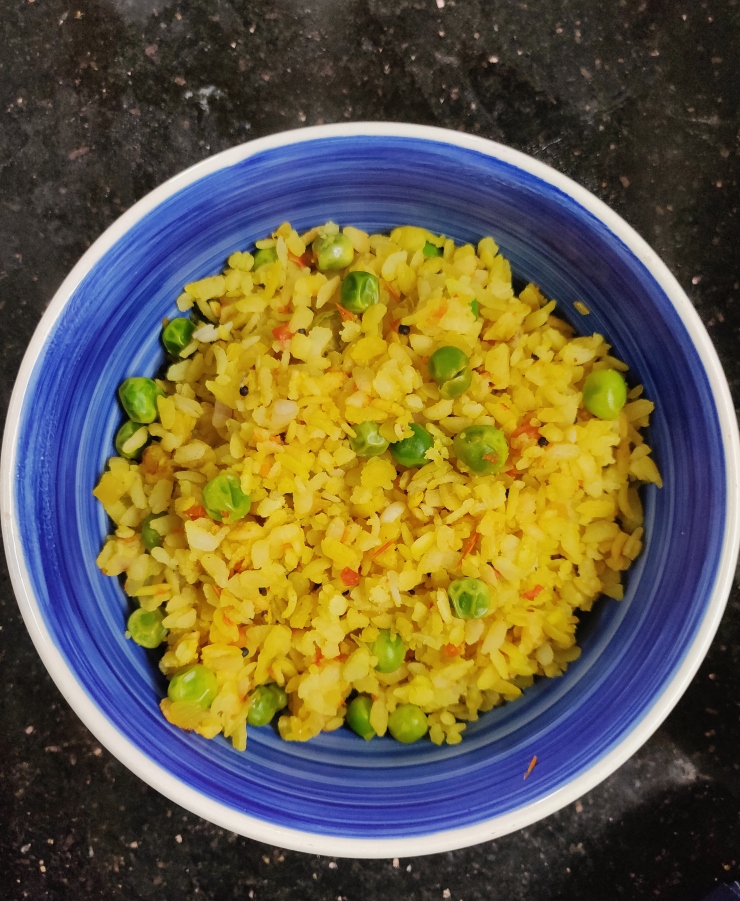
Even when I was doing a three month sales stint in rural Maharashtra, this was my go-to breakfast. When I have a lazy weekend at home with the husband and we are sick of the eggs and toast routine, we make poha. Poha is actually also the first thing I made for my mother-in-law when she came to stay with me for a few days (before K and I were married) 🙂
My version of Poha has evolved over time and is no longer the basic one I started eating when I was younger. The traditional poha has onions, sometimes potatoes/peas and is not very spicy (sometimes even a little sweet). While I love the base version, as long as it is not sweet, I prefer a little more oomph in my food.
My version always has tomatoes, onions, peas and green chillies. Sometimes potatoes and peanuts go into the mix as well.
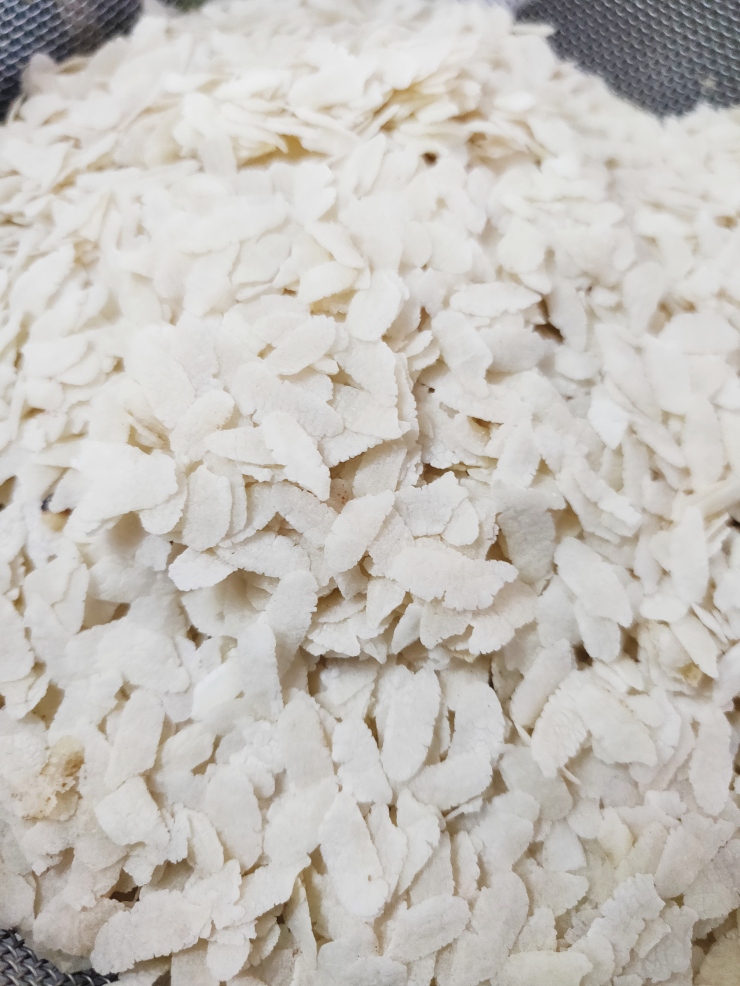
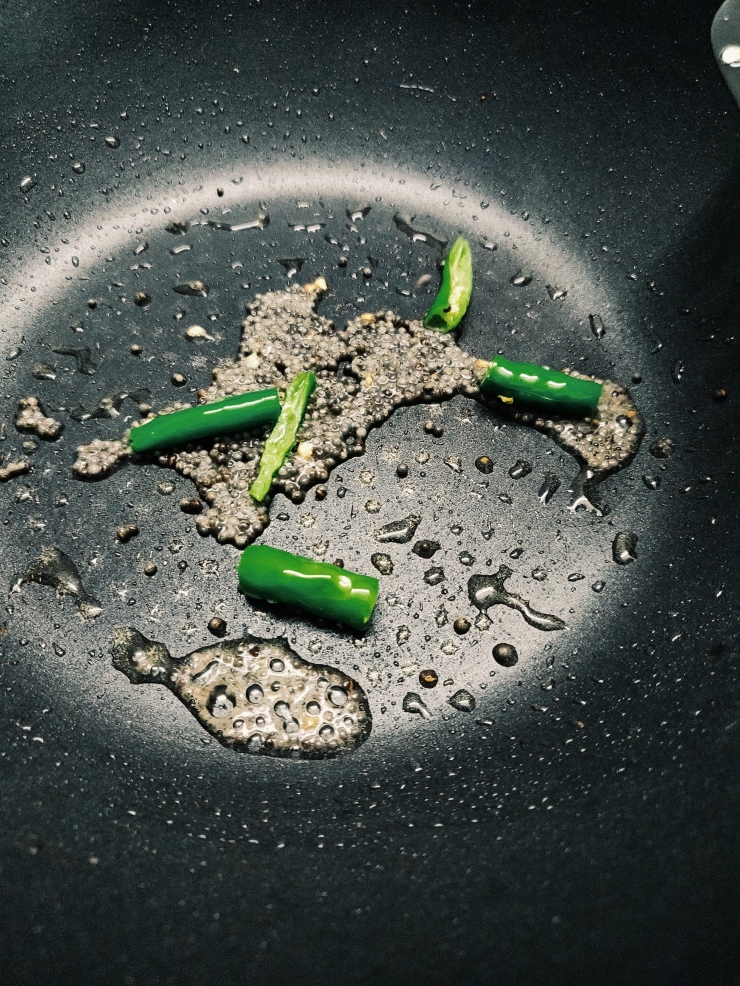
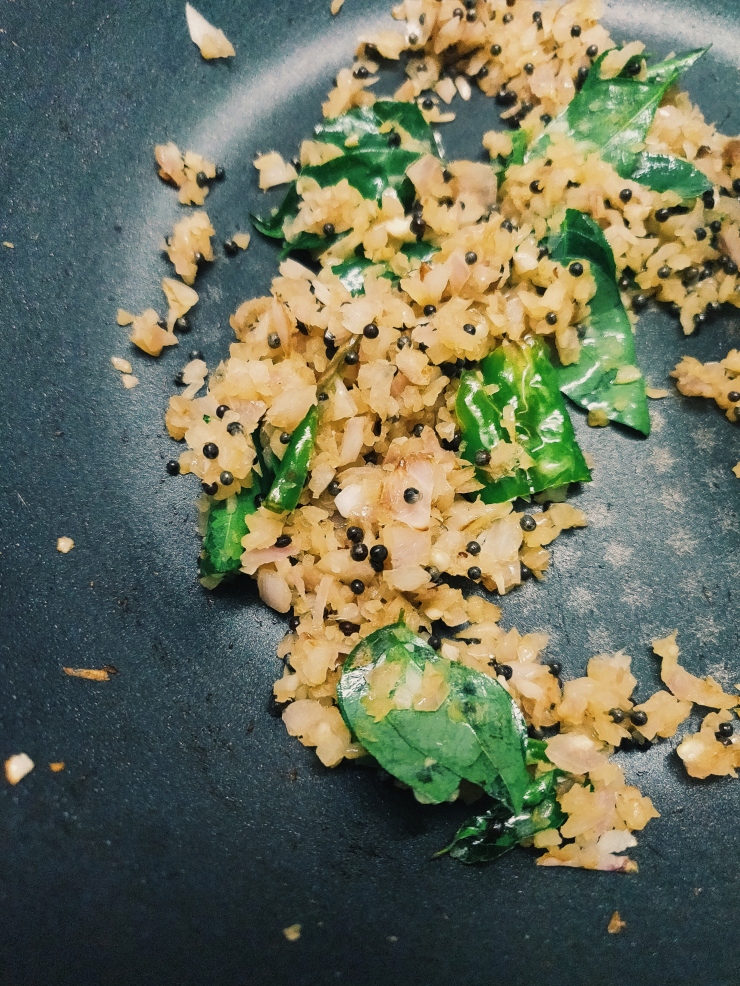
Poha is super forgiving that way – you can add whatever works for you. The key things are knowing when to soak the poha and for how long, before adding it to the pan. The other important thing is to know how long to cook it for.
I have had many, many occasions where the poha ended up gluggy or crispy – two opposite ends of the poha spectrum 🙂 After much trial and error, I developed this process and it seems to work well!
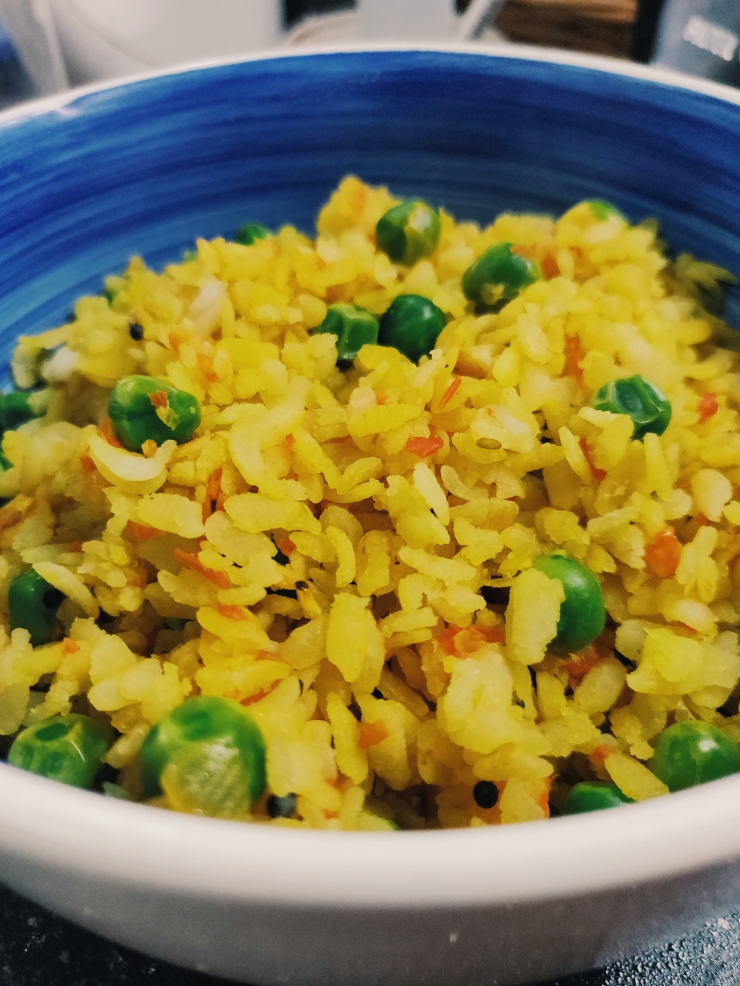
This dish comes together quickly and is packed with flavour. Try it out and it might just be your new way of making breakfast fun 🙂
Masala Poha
Ingredients
3 cups flattened rice (poha)
1 large onion – finely chopped
2 medium tomatoes – finely chopped
2 medium potatoes – finely chopped (optional)
3/4 cup peas – fresh or frozen both work
1 tsp mustard seeds
2 green chillies – split
3-4 sprigs of curry leaves
1/2 tsp turmeric (haldi) powder
1 tbsp oil
1 tsp lemon juice
salt to taste
Directions
- Heat oil in a wok. Add the mustard seeds. Once they splutter add the green chillies and cook for 30s.
- Add the chopped onions and a pinch of salt. Cook for about 3-4 minutes till the onions become soft and translucent. Add the curry leaves and cook for 30s.
- Add the diced tomatoes and a pinch of salt. Cook for 5 minutes till the tomatoes becomes soft and start releasing oil from the sides.
- If you are adding potatoes, do that now and cook for another 10 minutes till they are cooked through.
- Now add the peas, mix well and cook for 3-4 minutes.
- While the peas are cooking, put the poha (flattened rice) in a colander and rinse with water. Run the water through the poha, using your hands to make sure all the rice has been washed. Do this for about 30-45 seconds so that the poha doesn’t get too wet and soggy.
- Shake the colander to remove excess water and spread the washed poha on a plate to dry a little. Important to ensure that the poha isn’t too wet when it is added to the wok, else will become gluggy.
- Once the peas are cooked, add the poha and turmeric (haldi) powder to the wok. Toss together to make sure everything is mixed well.
- Cover and cook on low heat for 4-5 minutes. The steam helps to keep the poha soft.
- Once done, adjust the salt and squeeze lemon juice on top. Mix well and dig in 🙂
[…] with us forever) used to experiment, learn new things and we developed favourites along the way. Poha, paranthas, aloo puri, rolls and chillas are some of the results of those weekend breakfasts. And […]
LikeLike
Nice one. Kindly follow my blog to get the microwave version.
LikeLike